The journey of “Pronti Partenza...Via” to discover Italy’s most beautiful art cities continues; we remain in the Veneto region to talk about Treviso, the joyous and amorous city, born as Venus from water. These two definitions are certainly not just two delightful euphemisms to describe this gracious city, but best represent its two essences. Treviso was long the capital of the Marca of the same name, which was called precisely “gioiosa et amorosa” indicating the pleasure of living of its inhabitants. Moreover, Treviso is surrounded and crossed by waterways that not only softened its appearance and protected it, but also ensured a solid economy: in fact, the waters powered the mills of the paper mills, tanneries and dye factories.
The origins of the city are uncertain, but its history is inextricably linked to the Republic of Venice; the place name derives from the Trivigi of the “three faces,” or the three hills (from the Latin tervisus) on which the first settlements arose.
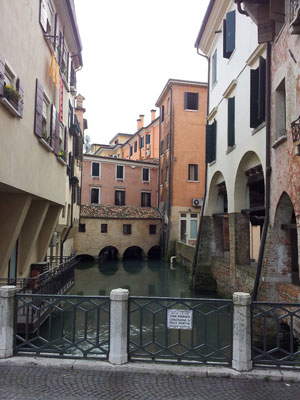 |
| One of Treviso’s canals |
Treviso also has no shortage of art venues: in the 1600s it was known as “Little Athens” for the fervent intellectual activity of poets, artists and men of letters. Even earlier, in the communal period, Treviso stood out as a cultural center distinguished by chivalric courtesy. The city came alive with festivals and celebrations, and this contributed to its name as a city of gaiety, the most eloquent symbol of which is the “boob fountain”: a Renaissance statue that lavished white and red wine from its breasts. This happened every sixteen months and lasted for three consecutive days and was repeated until the fall of the Serenissima. It certainly cannot be said that the fountain was a work of art, nevertheless the original statue is preserved under the wide portico of the Palazzo dei Trecento, while a “working” copy was placed a short distance away.
Staying on the subject of art, another of the many appellations that Treviso earned was that of “Urbs picta,” or painted city. To make up for the lack of valuable building materials, houses were painted sometimes reproducing the texture of bricks, other times instead adorned with large decorative devices, which are still partly visible today on many city palaces (Casa Robegan, Loggia dei Cavalieri, Ca dei Ricchi).
Curious, however, to know that in the Chapter House of the Temple of San Nicolò the first pair of spectacles in the history of art was frescoed by Tommaso da Modena, in the painting depicting Cardinal Ugo da Provenza. In addition to churches, places of art are also museums: the city’s museum collections and picture gallery are housed in Santa Caterina. Places of art are also the theaters; the 19th-century municipal theater, dedicated to Mario del Monaco, stands in the center and was restored thanks to a grant from the Cassamarca Foundation. Another gem is the Art Nouveau-style Eden Theater, which stands in a decentralized area right in the middle of the residential area attached to the early 20th-century factories.
Art: painting (Painted City), sculpture (the boob fountain), architecture (the communal and Venetian-era palaces), what’s missing? A healthy and appetizing food and wine offering starting from the renowned and precious DOCG prosecco wine, to the dishes of the Venetian cuisine, concluding with the most typical product of Treviso pastry: tiramisu.
And if we have sufficiently tempted you, then all you need to do is set out to discover Treviso, a shy but flirtatious city, like a beautiful woman who maintains that whimsical air of one who of pleasure.
Fabrizio Vaghi
After drinking a shade of prosecco, don’t forget to comment and answer the three quiz-questions about the city.
Question 1: In an important church rest the remains of two “sons of art,” who are they? Question 2: What were the Concions?
Question 3: In what famous work of literature is Treviso mentioned?
Trivia of the episode: the first wine road in Italy was created in 1964 in the Treviso countryside, between the hills of Conegliano and Valdobbiadene.
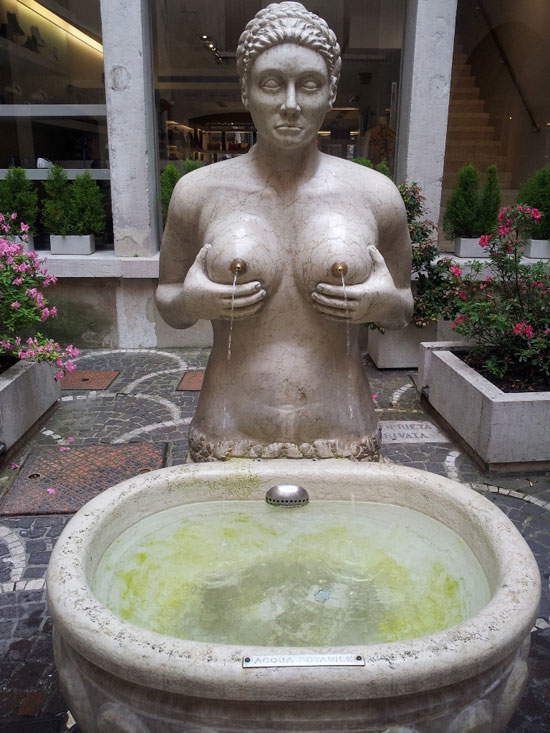 |
| The Fountain of the Boobs |
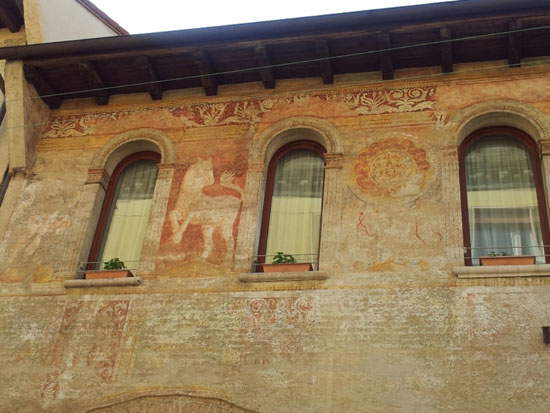 |
| Frescoes on the facade of an ancient building in the center of Treviso |
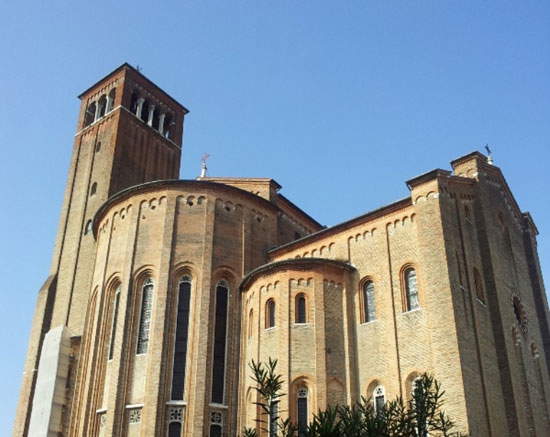 |
| The church of San Nicolò |
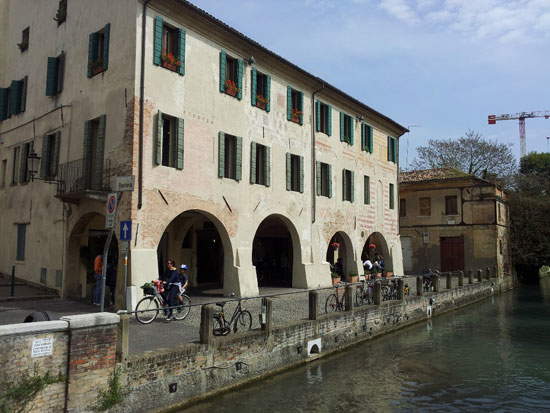 |
| One of the canals of the Pescheria |
Warning: the translation into English of the original Italian article was created using automatic tools. We undertake to review all articles, but we do not guarantee the total absence of inaccuracies in the translation due to the program. You can find the original by clicking on the ITA button. If you find any mistake,please contact us.